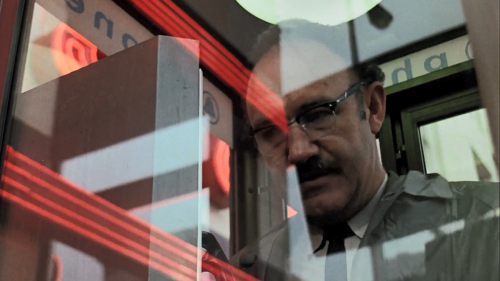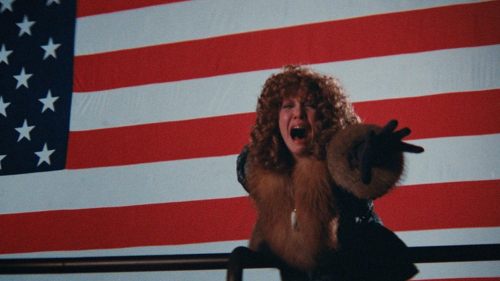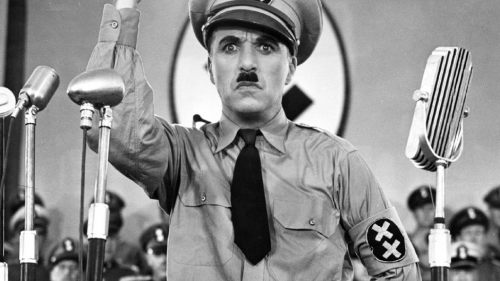BLOWUP: The Loneliness Behind the Camera
There are many details about the medium of sound that we take for granted, not out of negligence, but out of necessity. With all the richness and vibrancy that the sonic world luxuriates in it’s a great thing the human mind has honed its hearing to be narrow and concise, decisive about the information it takes in and even pickier about the information it chooses to use; there’s a reason our ears don’t close. With this subconscious, rigorous process of selection in mind, it’s nothing short of a miracle when tidbits of otherwise insignificant data catch our attention. Data like the intimate whispers of two lovers in a crowded square, or the wind howling through the trees to match the hoots of a nearby owl. Sometimes even the popping of a tire as a car crashes and careens into a reservoir.
When these tiny, out-of-context sound bites spring into our mind and surprise us, it’s the parts we don’t hear that have a habit of drawing us in. Francis Ford Coppola and Brian de Palma are both filmmakers who know this, and in their classic films The Conversation and Blow Out respectively, they try to ask all the relevant questions, but in starkly contrasting ways. Conversation’s Harry Caul learns to approach the act of listening with an aloof reverence, harmless in its usage by him yet oppressive in any other case. With John Travolta’s Jack Terry in Blow Out, the audience gets to witness how sound is a substance that permeates every act, yet listening, truly listening, can only lead to further alienation.
Even though both films are about masterful sound engineers who by happenstance find themselves neck deep in murder and intrigue, it’s still a surprise to imagine they share a common ancestor. Yet they do, in Michelangelo Antonioni’s 1966 masterpiece Blowup, a film that dispenses sound to focus on vision instead.
Individually, Blow Out and The Conversation have a lot in common with the film that inspired them, but all together the similarities between the three are miniscule—a skilled craftsman of aesthetic virtue becomes embroiled in a murder plot because of said aesthetic virtue. The funny thing is that the film which spawned the premise is also the one least concerned with it; the murder in Blowup becomes somewhat of a footnote in the film’s picaresque haze. What sticks out for one is Antonioni’s eye for the zeitgeist, as this middle-aged Italian captured early ‘60s British mod culture in a way no other filmmaker has since, but what’s mostly on show here is Antonioni’s ascetic observance of the act of observing, his concern for its effect on the mind. Once it becomes clear David Hemmings’ Thomas is the ultimate voyeur, no mystery remains for why De Palma loved this film.
In the final scene of Blowup, Thomas—our aforementioned protagonist—comes across a troupe of mimes, two of whom begin a game of badminton. The mimes play with invisible racquets and an invisible bird. Thomas is predisposed to believe he’s only stumbled upon a game that was already in motion, like a photojournalist finding a subject to capture. With that assumption, he watches the mimes uncritically, living by a mantra he expressed earlier in the film:
“I’m only doing my job. Some people are bullfighters. Some people are politicians. I’m a photographer.” In this scene, Thomas is defending himself after being caught taking photographs of an embracing couple in the middle of the park.
“This is a public place; everyone has a right to be left in peace,” one half of the couple (played by a young Vanessa Redgrave) says while reproaching him.
“It’s not my fault if there’s no peace.”
After all, he’s only a photographer. His job is to watch reality, to capture it, but never to influence it. Is that not the ultimate goal of the art form? To capture life as is, with no need for representation or interpretation?
Yet at the end of the film, Thomas finds as himself both the observer and the subject of an elaborate performance art. The mimes need an audience to give their work meaning, and without Thomas as the pivotal component “spectator,” there would effectively be no invisible tennis game.
A few of the mimes are there watching the invisible shuttlecock fly across the court with him, not as true spectators but as conspirators in the piece. They become his guiding camera, following the invisible bird with the tilt of their heads, and the actual eye of the film moves likewise, tracking long shots of empty air with the implication that there’s a projectile there and we just can’t see it. It’s a subtle use of cinematic language that blurs the line between the invisible and the imaginary, and by the time the camera dollies out of the court and pans into the nearby field, we are sufficiently prepared to assume the bird fell there. It’s an almost unconscious reaction, and not even Thomas can deny its effect, as his final act is to retrieve the bird so the game can resume. Blowup’s Thomas, much like Harry Caul, wants to believe in the uninvolved observer, but their behaviors prove they don’t.
Perhaps it’s not so much of a coincidence that Thomas refers to his models as “birds” during photo shoots. He is presented as meticulous, and highly engaged in his work while taking part in it. Thomas is able to bring out an erotic energy during photo shoots, but such is his focus that as soon as he decides the job is over he reverts to a post-coital lethargy. The way his associates react to him suggest it’s not uncommon for Thomas to walk out in the middle of shoot when he isn’t feeling particularly inspired.
Over the course of the movie, we do begin to understand Thomas outside of his photography. In fact, he is very much bored by the artifice of the work which pays his bills, and gladly uses his talents to document the streets unseen by most. “It’s very peaceful, very still,” he says, describing to his agent the photos he took of the aforementioned couple. Unknown to him at that point in the story was the image of imminent violence which had embedded itself in the photo: a gunman hidden in the bushes behind the lovers. Through his photography, Thomas unwittingly took part in a murder, yet Antonioni chooses to frame it as a moment of serenity. On a functional level, that decision was necessary to preserve the twist—Thomas doesn’t know about the gunman, and neither does the audience—but it also works at conveying our lead photographer’s humanistic intentions.
What becomes clear—not only from Thomas’s passion projects, but also his mannerisms, his mood swings, and the film’s lackadaisical pacing—is that Thomas seeks spontaneity. While following a couple’s tryst up a flight of stairs, the photographer hops in the air to click his heels, all while wearing his same stodgy expression. After one extended sequence involving the nascent Led Zeppelin (still under the moniker of the Yardbirds), Thomas finds himself fighting for the possession of Jeff Beck’s discarded guitar neck, only to discard the object himself minutes later.
Ironically enough, it’s the film’s murder plot that injects a new life into him. Both Thomas and his spiritual successor in Blow Out allow the unknowable treachery which they only caught glimpses of to become their new obsession. And although neither of their investigations lead to justice, they do leave each of them with an artifact—either the image of a dead stranger or the clawing wail of a loved one in peril—to remind them of a time when they perceived the world in all its vibrancy.
At its heart, Blowup is a snapshot of an artist’s scattered mind. To do his job, Thomas must observe with half a mind on the outside and the other half within. By positioning himself in such an ambiguous manner, Thomas yearns for the warmth and familiarity of being involved while forgetting that merely observing is its own kind of involvement. Who knows if the mimes’ badminton match could have continued if Thomas didn’t retrieve the bird? What’s for certain is that the mimes’ game would never have existed if nobody was there to see it.



